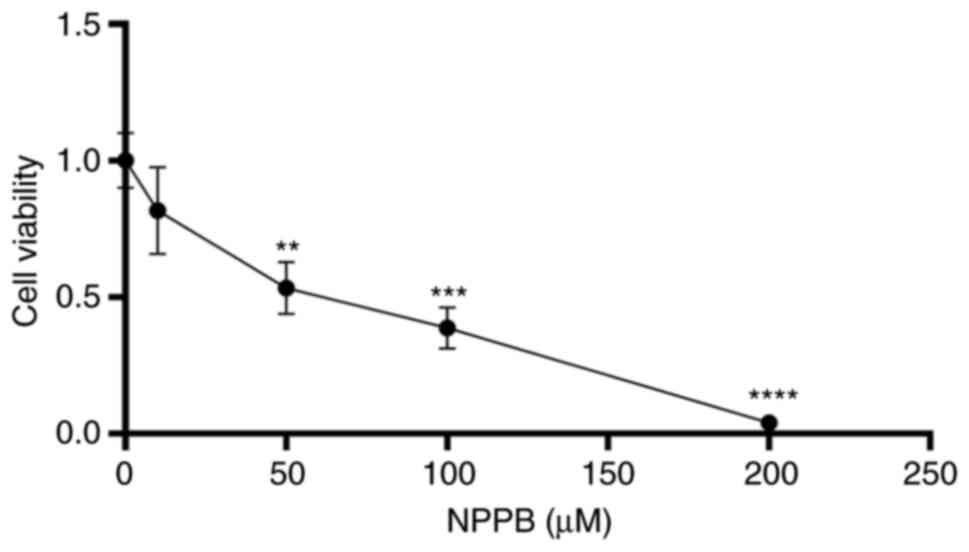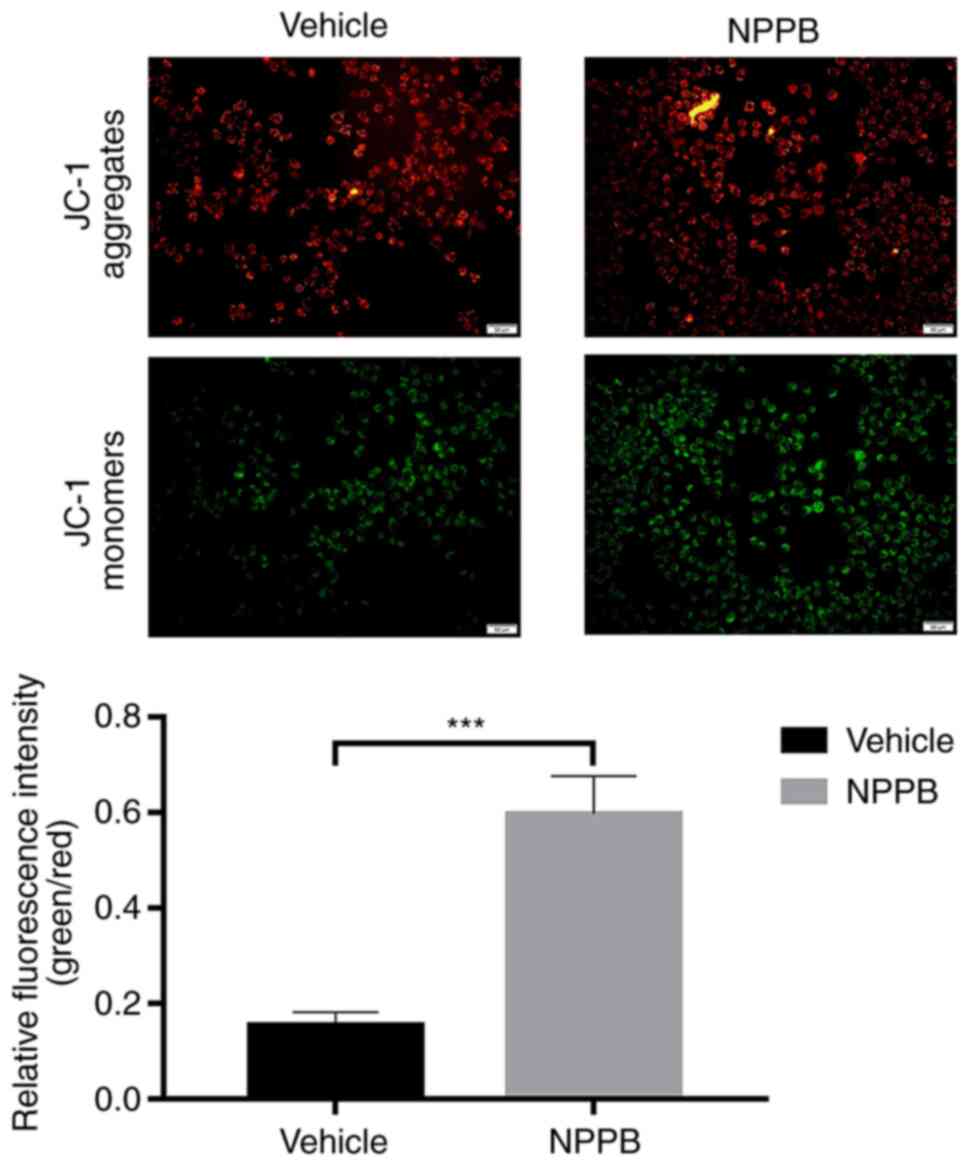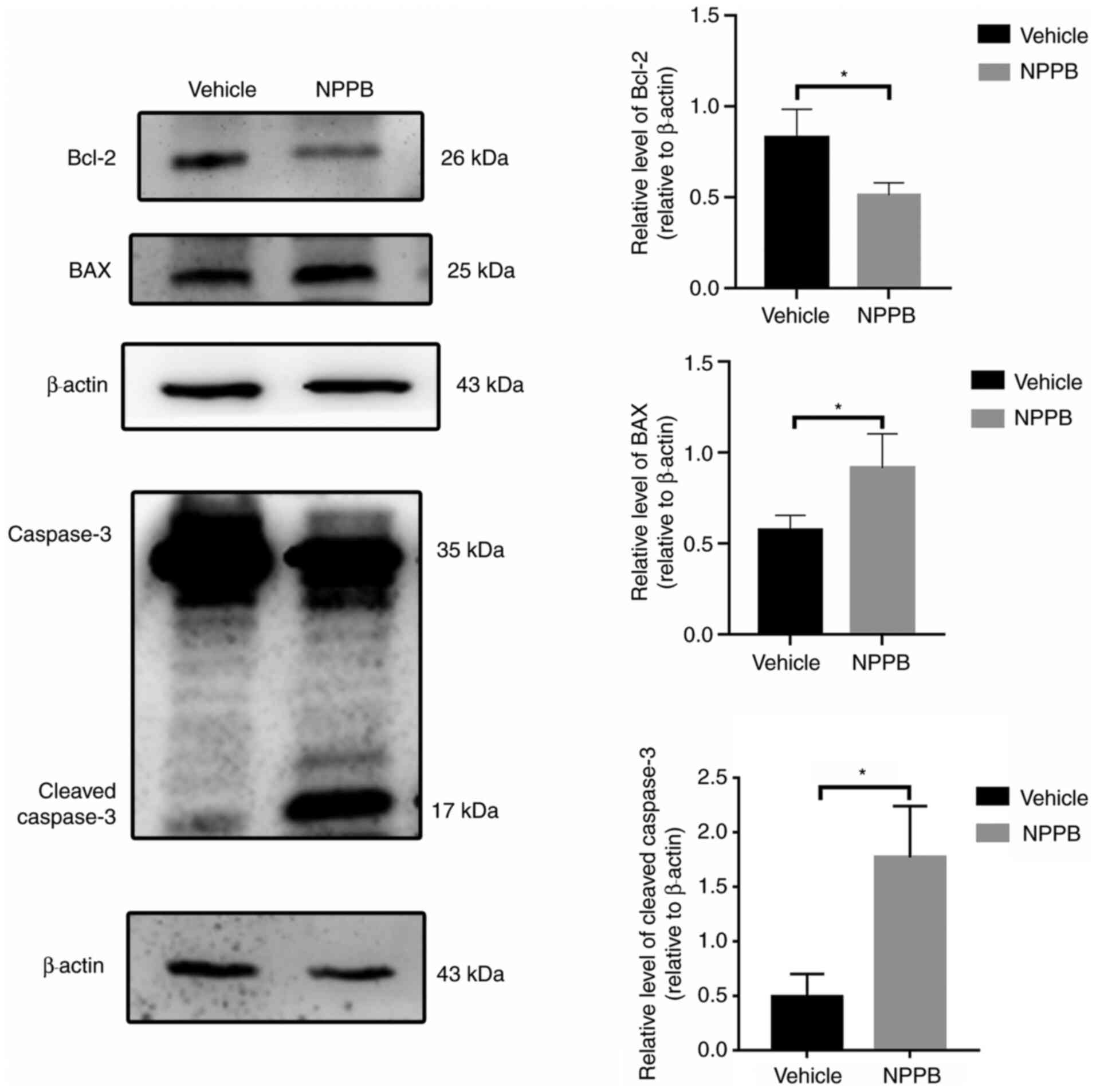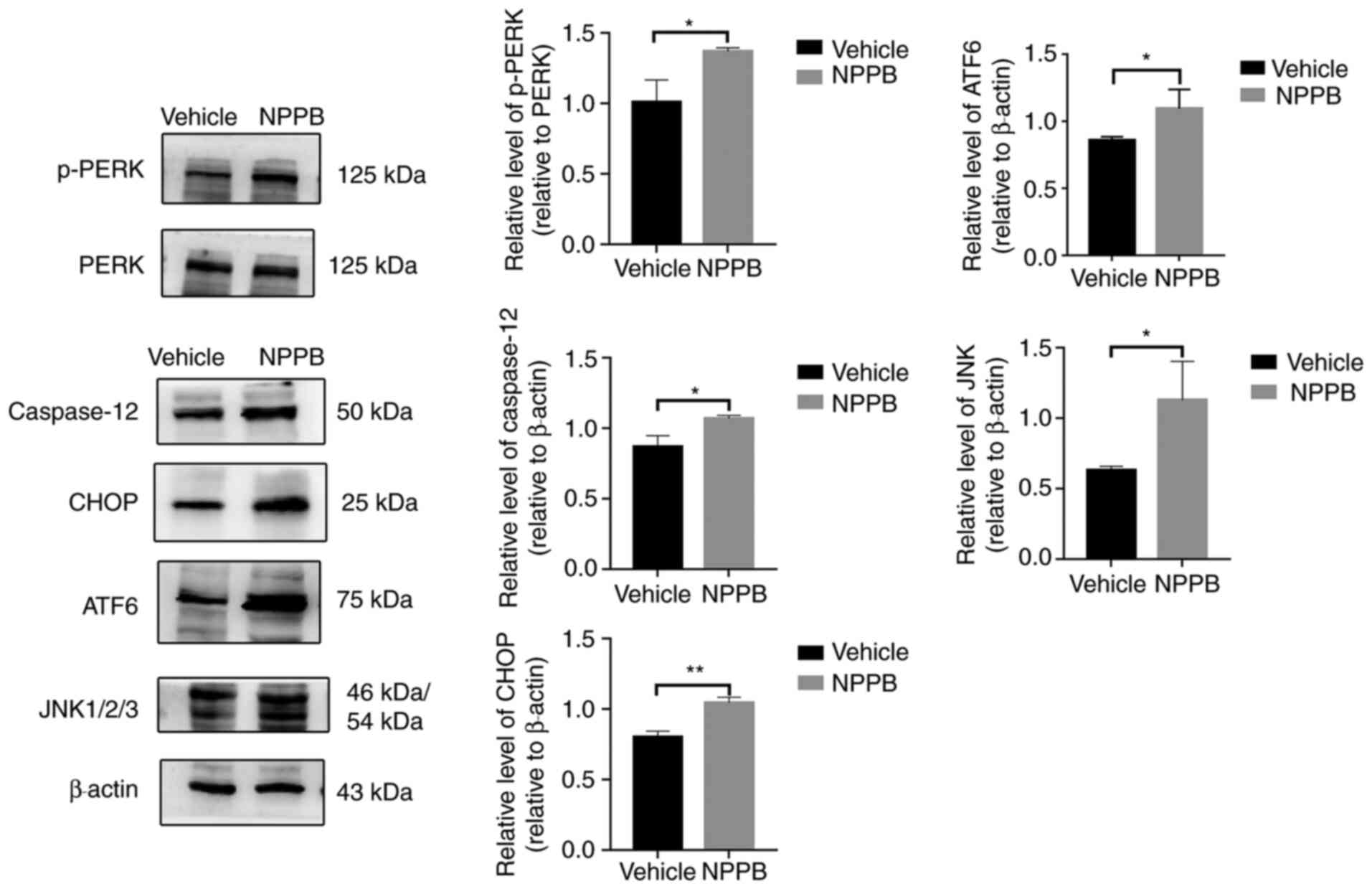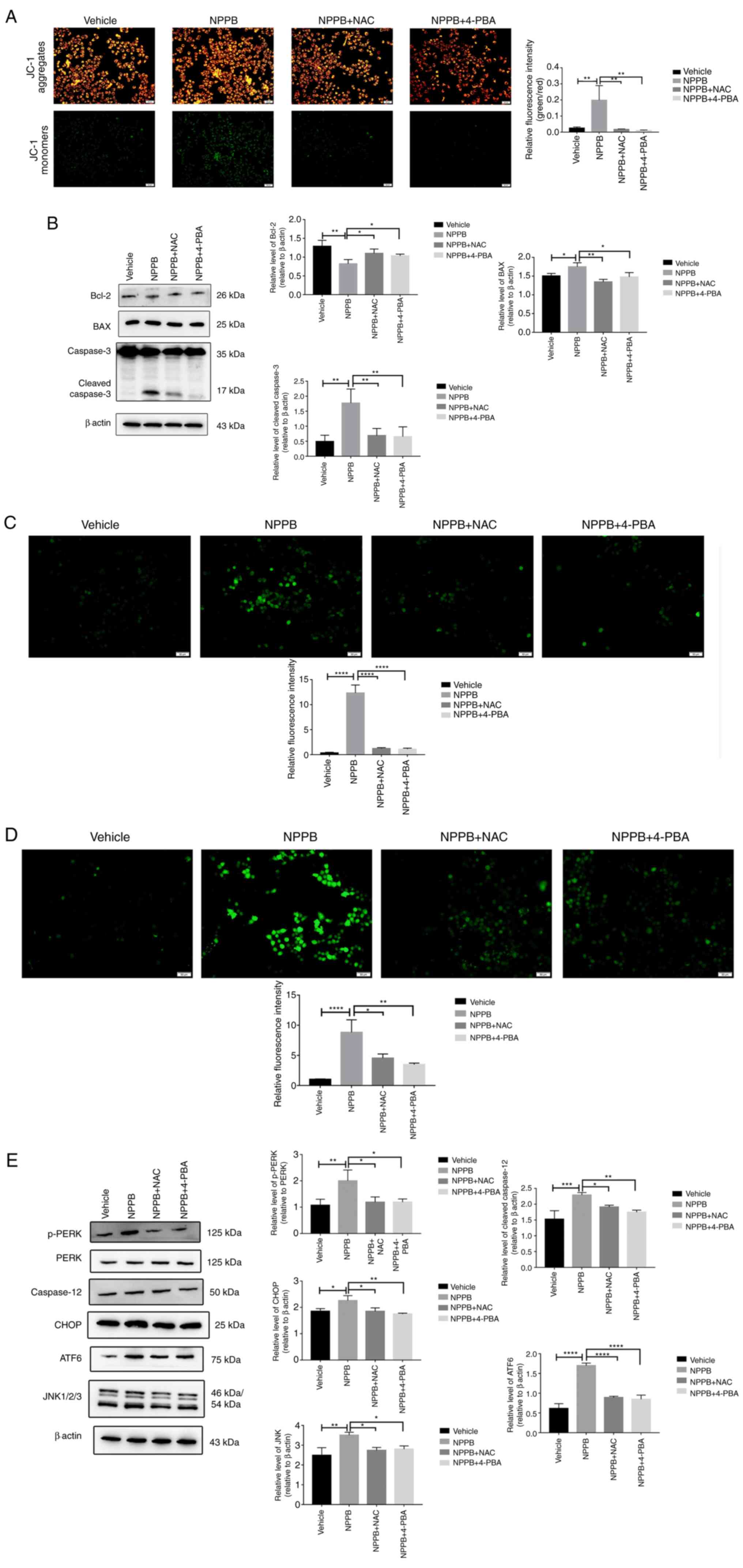Spandidos Publications style
Niu L, Liu X, Zhao J, Wang Y, Li Y, Li K, Sun Y and Zheng Y: 5‑Nitro‑2‑(3‑phenylpropylamino) benzoic acid induces apoptosis of human lens epithelial cells via reactive oxygen species and endoplasmic reticulum stress through the mitochondrial apoptosis pathway. Int J Mol Med 47: 59, 2021.
APA
Niu, L., Liu, X., Zhao, J., Wang, Y., Li, Y., Li, K. ... Zheng, Y. (2021). 5‑Nitro‑2‑(3‑phenylpropylamino) benzoic acid induces apoptosis of human lens epithelial cells via reactive oxygen species and endoplasmic reticulum stress through the mitochondrial apoptosis pathway. International Journal of Molecular Medicine, 47, 59. https://doi.org/10.3892/ijmm.2021.4892
MLA
Niu, L., Liu, X., Zhao, J., Wang, Y., Li, Y., Li, K., Sun, Y., Zheng, Y."5‑Nitro‑2‑(3‑phenylpropylamino) benzoic acid induces apoptosis of human lens epithelial cells via reactive oxygen species and endoplasmic reticulum stress through the mitochondrial apoptosis pathway". International Journal of Molecular Medicine 47.4 (2021): 59.
Chicago
Niu, L., Liu, X., Zhao, J., Wang, Y., Li, Y., Li, K., Sun, Y., Zheng, Y."5‑Nitro‑2‑(3‑phenylpropylamino) benzoic acid induces apoptosis of human lens epithelial cells via reactive oxygen species and endoplasmic reticulum stress through the mitochondrial apoptosis pathway". International Journal of Molecular Medicine 47, no. 4 (2021): 59. https://doi.org/10.3892/ijmm.2021.4892















